At a round 2:52 of this video https://youtu.be/74QrYyYsftY?t=169, the narrator states that connecting a wire through the center of the transformer splits the voltages between two halfs of the transformer. Why exactly does this happen?
2 Answers
... connecting a wire through the center ...
A centre-tap connects to the centre.

simulate this circuit – Schematic created using CircuitLab
Figure 1. A centre-tapped transformer is the same as two independent secondaries connected in series (by blue wire on diagram).
why is it grounded tho?
The ground symbol just tells us what point of the circuit we are using as reference. It's convenient to measure all voltages from there - so think of that as the point to connect the black lead of your multimeter or the earth clip of your oscilloscope.
and why is emf of one of them opp to the other?
It's not. Both halves of the winding are oriented the same way, as indicated by the dots on the coils.

Figure 2. An analogy using DC cells.
Hopefully Figure 2 makes it a bit clearer. Depending which point we assign as reference (GND) the other points relative voltage changes.
You could consider the voltage a bit like floors on a building. In Europe, we agree that the ground floor is 0 or G, that floors above it are numbered positively and numbers below it are negatively. You now have the option of measuring everything relative to ground (the floor number) or measuring the difference in level between any two floors (the potential or voltage difference).
In the left image above our man is standing on Floor 2 relative to ground. The electrical analogy is that some point on the circuit is connected to ground / earth and by convention is zero volts and all voltages (heights) are measured relative to this.
An 'all above ground' building will have no negative floors. A bunker or underground car-park will have no positive floors.
If the building is launched off into space he has no ground reference and is free to number the floors any way he wishes, including have Floor 0 at any arbitrary point. This is analogous to having an electrically isolated circuit with no ground connection in that we can call any point 'ground'.
- 168,990
- 12
- 186
- 385
-
why is it grounded tho? and why is emf of one of them opp to the other? – Reine Abstraktion Jan 02 '20 at 22:16
-
@DDD4C4U It's all about what your reference is. That's all. If I am on the 1st floor of a building I measure how high you are from me, I will get a positive number if you are on the second floor but a negative number if you are in the basement. If I am in the basement, I will get a positive number if you are on the first floor and second floor. If I grounded the bottom terminal of the transformer, I am measuring with respect to the basement. If I connect the ground to center tap, I am measuring with respect to the 1st floor. Nothing has physically changed, only the reference for measurement – DKNguyen Jan 02 '20 at 22:25
-
1It's just like if you measure elevation with respect to sea level. Mount Everest will be a positive number and the bottom of the ocean will be negative. But if I measure elevation with respect to the bottom of the ocean, sea level and Mount Everest are both positive. Nothing has physically changed. The ocean didn't get deeper and the mountain didn't get taller. You just use a different datum, or reference for what zero is. – DKNguyen Jan 02 '20 at 22:31
-
Thanks @DKNguyen: I've reused an image from my answer to https://electronics.stackexchange.com/questions/202750/positive-vs-negative-power-vs-ground-flow-direction/208061#208061 which illustrates your analogy. – Transistor Jan 02 '20 at 22:32
-
@DDD4C4U: See the update. – Transistor Jan 02 '20 at 22:32
Because you have tapped off a voltage that is half-way between the two ends. Nothing magical happens.
Suppose you have a transformer with two outputs 0V and 24V. If you connect to the middle of the secondary winding, you now have 0V, 12V and 24V.
Or, if you prefer, you can call it 12V, 0V and 12V, where the two 12V ends are out-of-phase with each other. The only difference is which terminal you choose to call 0V.
- 18,609
- 1
- 29
- 55
